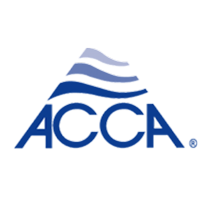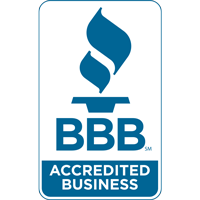
Ceiling fans are one of the most overlooked ways to increase home comfort and cut energy costs. By boosting air circulation and assisting your HVAC system, ceiling fans and energy efficiency are truly a perfect combination. They offer a practical, energy-efficient way to stay cool while reducing strain on your AC—even preventing unnecessary air conditioning repair.
In this blog, the experts at All Solutions Heating & Cooling explain how ceiling fans can keep you cool while lowering your energy use with higher HVAC efficiency. We'll also offer some HVAC efficiency tips that put to good use ceiling fans.
Comfort vs. Temperature: The Effect of the Wind-Chill Effect Indoors
Ceiling fans don’t actually cool the air—they cool you down by blowing air across your skin. This is referred to as the wind-chill effect, and it can make a room feel up to 4 degrees cooler without touching the thermostat. That means you remain cool and enjoy the benefits of indoor air circulation from your ceiling fan while relying less on your air conditioner—helping reduce your electric bill in summer.
The Best of Both: Why You Should Use Fans and Air Conditioning Together
There are several upsides to using ceiling fans and air conditioning in tandem, especially on hotter days. By pairing both, you boost HVAC efficiency and keep your home cooler with less work from your cooling system.
Benefits of using ceiling fans and AC together:
- Ceiling fans help lower HVAC load by spreading cool air more evenly throughout the room. Decreasing HVAC stress is important, because it can save you from a breakdown that may lead to premature AC or furnace installation.
- Using overhead fans improves your indoor comfort by eliminating hot spots and enhancing circulation.
- Combining ceiling fans and AC can reduce overall energy use. If you have a home automation system, you can even fine-tune your smart thermostat settings to increase the temperature slightly while your ceiling fan is running.
Clockwise vs. Counterclockwise Ceiling Fan Rotation: Which is the Correct Direction?
To maximize the benefits of your ceiling fans year-round, it’s important to make sure the blades rotate in the proper direction for the season. The direction influences how air circulates, which can either or redistribute heat so you feel warmer.
When to spin ceiling fans counterclockwise
On hot days, ceiling fans should rotate counterclockwise at a higher speed. This creates a breeze that forces cool air down, amplifying the wind-chill effect and creating a cooler sensation.
When to rotate ceiling fans clockwise
On cold days, set your fan to rotate clockwise on a gentle setting. This lifts cooler air and draws warm air downward from the ceiling, making the space feel cozier without adjusting your thermostat.
How to Pick Out the Best Ceiling Fan for My Home
Picking the right ceiling fan depends on a few important details, including blade design, airflow rating and room dimensions. First, look for fans with a good blend of ECFM airflow and blade pitch to provide efficient air circulation in your space:
- ECFM is how much air a fan circulates—the cubic feet per minute, or CFM—per watt of electricity it uses. Fans with higher ECFM are more energy efficient.
- Blade pitch is the angle of the blades. A sharper blade pitch moves more air than a shallower pitch but can also strain the motor.
Also, consider room size when sizing a ceiling fan—a fan that’s too small won’t move as much air as you'd like, while one that’s too big may be disruptive in a smaller room.
Boost Your HVAC Efficiency With the Team from All Solutions Heating & Cooling
At All Solutions Heating & Cooling, our HVAC technicians can help you stay comfortable while reducing strain on your heating and cooling systems. From energy-saving ceiling fan tips and air conditioning installation to smart thermostats and furnace repair, we offer comprehensive services that match your needs. Schedule your appointment by calling 971-414-2639 today.



